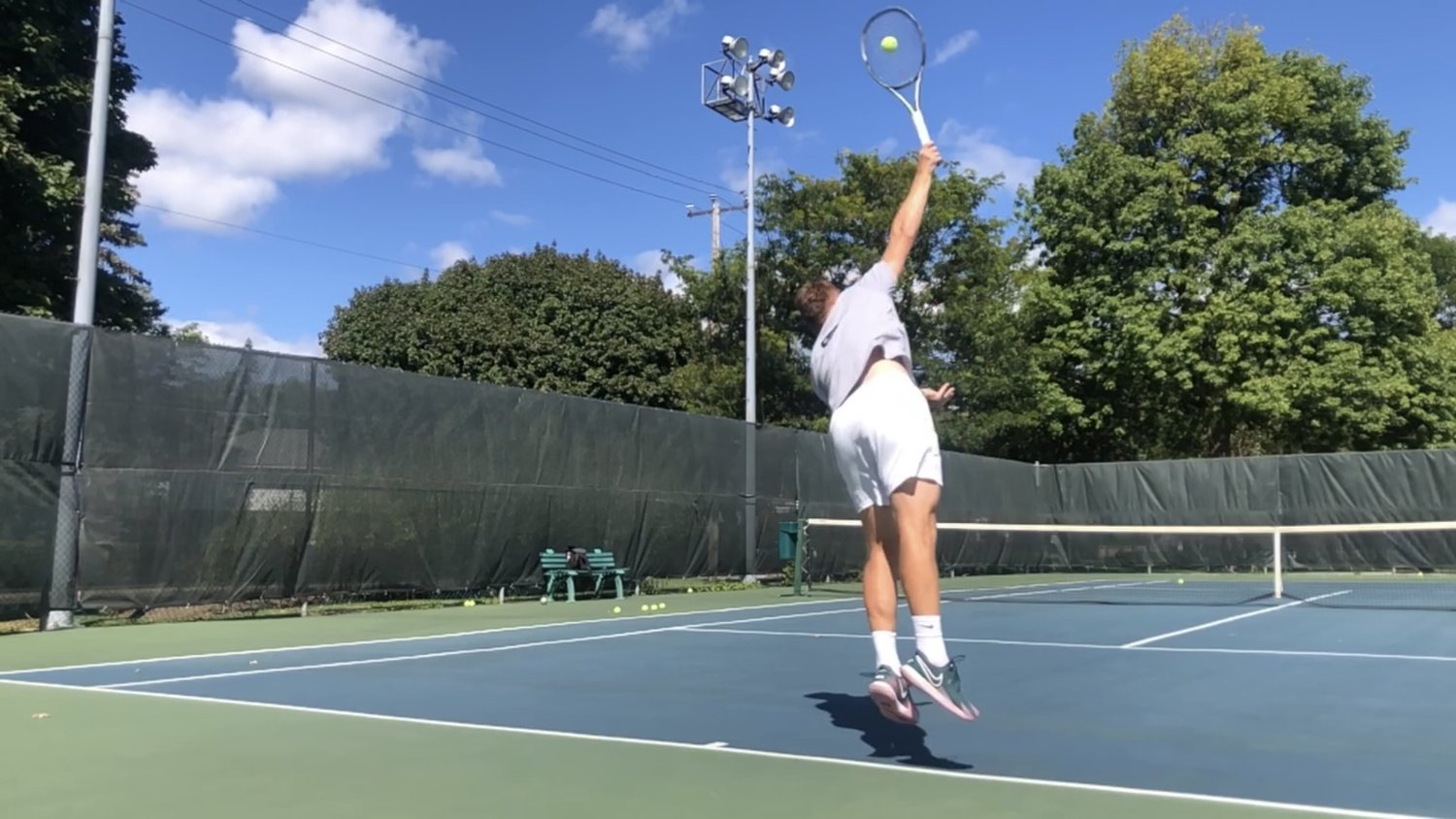Try this for yourself. Not that difficult.
Yes, that is true... And yes I am aware that you are speaking generally and not necessarily referring to the serve...
Will have to think more about this. But one comment for now:
I suspect that the restriction (when attempting ESR + pronation) is not just limited to when arm is in a straight arm position.
The average ROM for ESR is 90-110 degrees. Even with elbow flexed at 90 degrees, and attempting ESR + pronation, there will be some severe restriction when approaching ~90 degrees ESR. ESR feels stuck if forearm is pronated. But if performing ESR+supination there will be several degrees more ESR and consequently far more shoulder stretch.
That end range of motion for ESR is the critical phase that primarily stretches the shoulder muscles.
Let's check with AI Bard:
Yes, you're on the right track! During the tennis serve motion, the stretch and loading of the shoulder muscles typically occur from the trophy position to the racket drop position. At the trophy position, the external shoulder rotation (ESR) usually ranges from around 90 to 100 degrees, as the arm is positioned in a relatively high but not extreme external rotation.
As the racket drops from the trophy position to initiate the serve, there's a slight increase in the external shoulder rotation. This increase in rotation may bring the ESR to approximately 100 to 110 degrees as the shoulder undergoes further movement, preparing for the forward swing and generating power for the serve.
So, the stretch and loading of the shoulder muscles indeed progress from the trophy position to the racket drop position, with a moderate increase in external shoulder rotation occurring during this phase of the serve.
You are correct that the external shoulder rotation (ESR) at trophy position in a tennis serve is approximately 90 degrees. As the racquet drops from trophy, the ESR can reach up to 105 degrees. This is because the muscles of the shoulder are stretched and then recoil, providing a powerful whip-like motion to the racquet head.
Here is a more detailed breakdown of the ESR at different points in the tennis serve:
Backswing: The ESR is close to 0 degrees at the start of the backswing. As the arm is raised, the ESR increases to around 60 degrees.
Unit turn: The ESR continues to increase during the unit turn, reaching around 90 degrees at trophy position.
Dropping racquet: As the racquet drops from trophy position, the ESR can reach up to 110 degrees. This is due to the stretch-shortening cycle of the shoulder muscles.
While the shoulder is in a position of external rotation at the trophy stance, the substantial loading and stretching of the shoulder muscles typically occur as the racket drops from the trophy position to initiate the serve.
The trophy position sets the stage for the serve and places the shoulder in a high external rotation, but the significant loading and stretch of the shoulder muscles occur during the transition from the trophy position to the racket drop. This phase allows for an increased stretch of the muscles involved in generating power for the serve, especially in the shoulder and torso, as the body begins to engage in the kinetic chain for the serve's power generation.
Therefore, the most substantial loading and stretch of the shoulder muscles usually occur during the motion from the trophy position to the racket drop, allowing for the optimal utilization of the body's kinetic energy and the generation of power in the tennis serve.
















